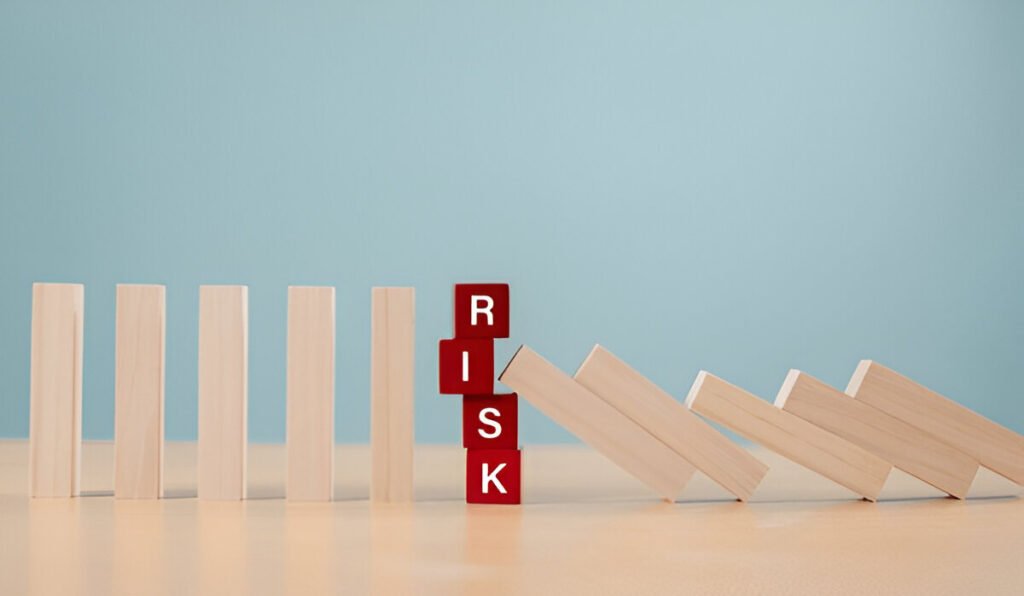What Are the Risks of Branding?

Branding is powerful. It defines how people see your business, how they talk about it, and whether they trust it. A strong brand can attract loyal customers, raise your value, and help you stand out in a crowded market.
But there’s another side to branding that many businesses overlook.
When handled carelessly, branding can harm more than help. It can create confusion, attract the wrong audience, or cause long-term damage to your reputation.
This guide will walk you through what are the risks of branding, showing you how each one can affect your business—and how to avoid them.
Poor Brand Messaging Can Ruin First Impressions
Lack of Clarity in Communication
The first risk in branding is unclear messaging. If people don’t understand who you are, what you do, or what you stand for, they won’t take the next step. They won’t click, call, or buy.
For example, if your website says one thing and your social media says another, it leaves your audience confused. Consistency in tone, language, and message is critical.
Overcomplicated Language
Brands sometimes try to sound too smart or too creative. That can backfire. People need to “get” your brand within seconds. Using fancy words or complex ideas can turn them away. Keep it simple and relatable.
Reaching the Wrong Audience
Trying to Please Everyone
A common mistake in branding is trying to appeal to everyone. But when you try to be everything to everyone, you often lose your true identity. You end up sounding generic or bland.
Branding should be specific. Speak directly to the group of people most likely to benefit from your product or service. If you’re talking to everyone, you’re talking to no one.
Misalignment with Customer Needs
If your brand suggests luxury but your target audience values affordability, there’s a mismatch. That gap can lead to poor engagement and low conversion rates. Your brand promise must align with your customers’ actual desires.
Overpromising Hurts Brand Trust
Big Claims, Small Delivery
Every brand makes a promise. Maybe it’s about quality, speed, price, or service. But when the reality doesn’t match the promise, customers feel let down.
Let’s say your brand promises 24/7 customer support, but your team only works office hours. That kind of gap doesn’t just disappoint people—it damages trust. And trust is hard to rebuild once it’s lost.
Brand Reputation Takes Time to Rebuild
A single broken promise can lead to bad reviews, angry social media posts, and word-of-mouth damage. While fixing the issue is important, rebuilding a brand’s reputation takes a lot longer than losing it.
Inconsistency Across Channels
Visual Mismatches Create Confusion
Your logo, brand colors, and fonts must look the same across all platforms—website, social media, email, packaging. If your brand looks different in different places, it feels unstable.
Inconsistent visuals make your business look unprofessional. It makes people wonder if you’re serious or trustworthy.
Inconsistent Voice and Tone
One day your brand sounds formal. The next day it’s playful. This confuses people. They don’t know what kind of company they’re dealing with.
A consistent voice helps your audience form an emotional connection. It builds familiarity and comfort. Without it, your brand lacks identity.
Legal Risks Are Real
Trademark Infringement
When creating your brand, it’s easy to fall in love with a name or logo. But if someone else already owns it, using it can land you in legal trouble.
You could face lawsuits, be forced to rebrand, or lose the right to do business in certain markets. That’s why checking trademark availability is a non-negotiable step in branding.
Copyright Violations
Images, fonts, slogans, music—many creative elements are protected by copyright. Using them without permission, even by mistake, can result in fines or lawsuits.
Always use licensed material or create original content to protect your brand legally.
Public Backlash and Crisis Risks
Brands Live in the Public Eye
The more attention your brand gets, the more pressure there is to maintain a spotless reputation. One wrong move—a bad tweet, an insensitive ad, or a political misstep—can spark major backlash.
Brands like Pepsi and H&M have faced public criticism for campaigns that were perceived as tone-deaf. These moments can go viral and lead to long-term damage.
Slow or Poor Crisis Response
When a brand is under fire, silence or poor communication makes things worse. Having a crisis response plan is essential. Respond quickly, take responsibility if needed, and show that you care about your audience’s concerns.
Copycat Brands Cause Confusion
Competitors May Imitate You
Once your branding starts working, others may try to copy your look, message, or even product names. These imitators can steal traffic, confuse customers, and harm your reputation if they deliver poor quality.
Protecting Your Intellectual Property
Trademarking your logo, slogan, and brand name is key. It doesn’t stop all copycats, but it gives you the legal tools to fight back if someone tries to hijack your identity.
Not Evolving With Time
Trends and Culture Change
Brands that resist change often fade into the background. What worked ten years ago may no longer connect with today’s audience. The world moves fast, and your brand must keep up.
This doesn’t mean changing your brand every year. It means making smart updates to stay current while honoring your core identity.
Staying Static Feels Stale
A brand that feels frozen in time may look lazy or disconnected. On the flip side, refreshing your look, updating your language, and modernizing your design shows growth and awareness.
Internal Misalignment Damages Morale
Employees Don’t Connect With the Brand
Branding isn’t just for the public. It affects your internal team too. If your staff don’t understand or believe in your brand, they’ll struggle to represent it.
For example, if your brand claims to value work-life balance but your employees are constantly overworked, they’ll feel betrayed—and that shows in their work.
Culture and Brand Must Match
Great brands are built from the inside out. If your company culture supports your brand values, your team becomes your best brand ambassador. If not, the disconnect will weaken your reputation from within.
Final Thoughts
So, what are the risks of branding? They’re serious, varied, and sometimes hidden. Poor messaging, legal issues, mismatched audiences, and public backlash can all damage your brand in ways that take time and money to repair.
But don’t let fear stop you from building a brand. Instead, use this awareness to build it right. Be clear, be consistent, and be mindful of the message you’re sending to the world.
Branding is more than logos and colors—it’s your company’s promise to the world. Make sure that promise is honest, thoughtful, and strong enough to stand the test of time. To navigate branding risks effectively, it’s important to consider emotional motivators that deeply influence customer loyalty and perception.





